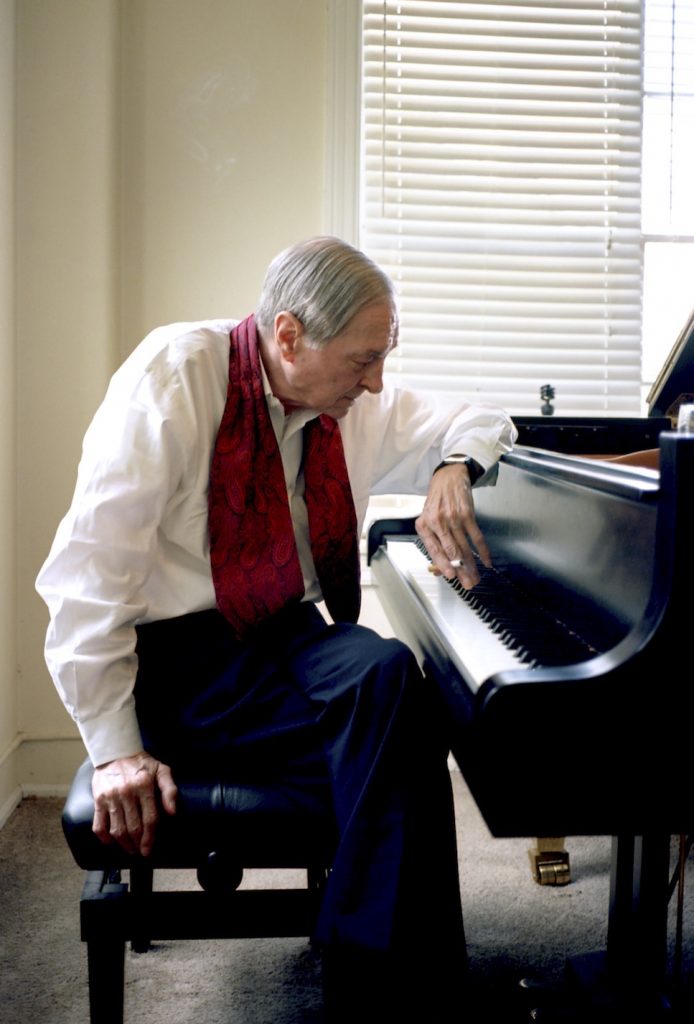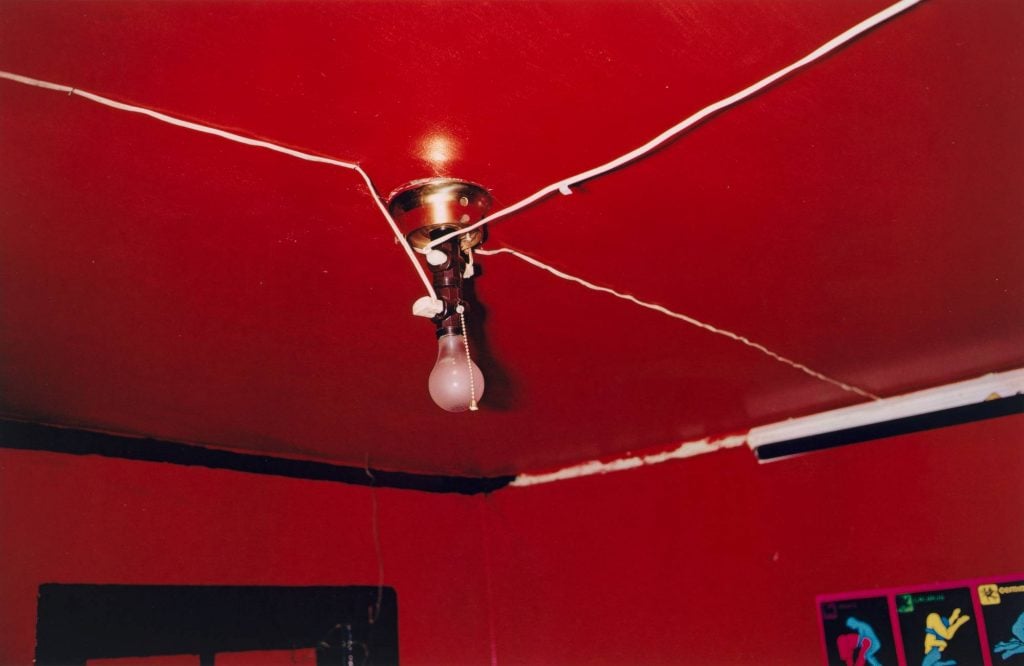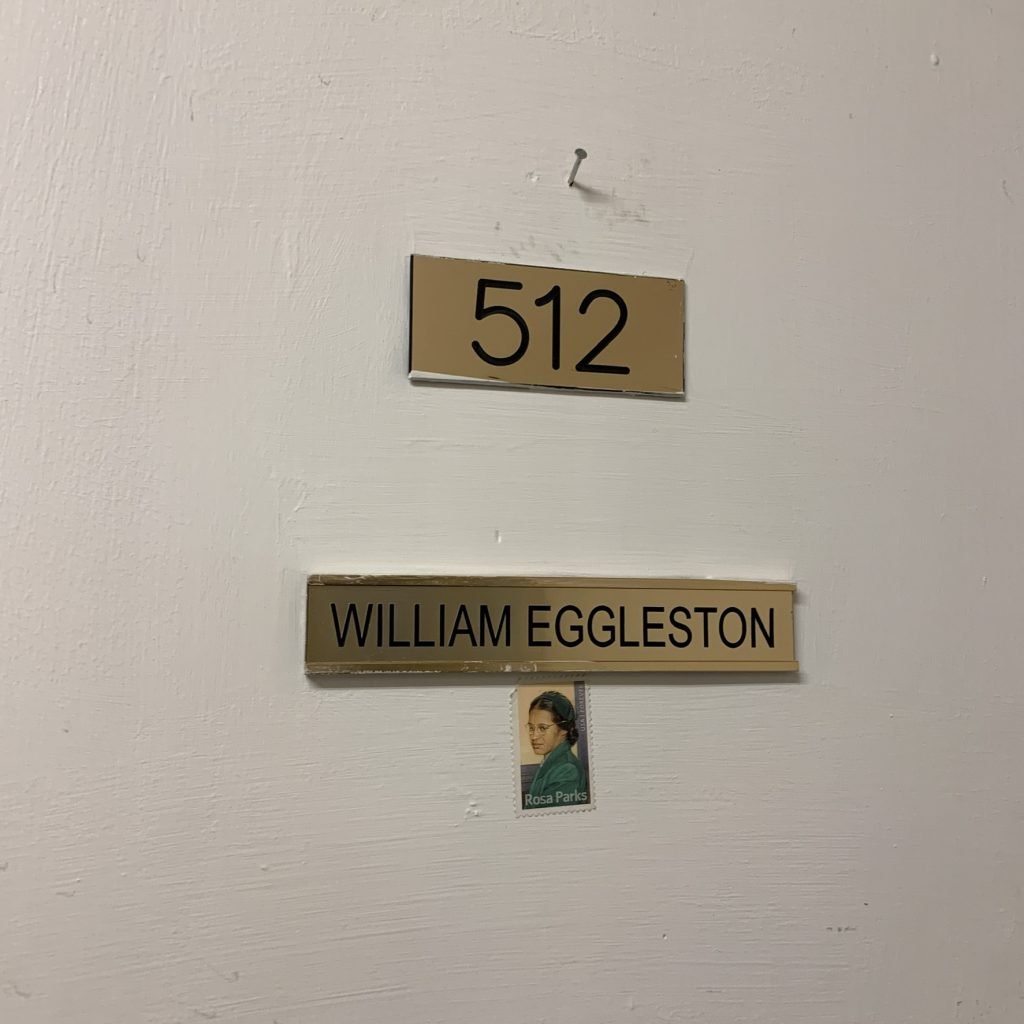Pop Culture
Photographer William Eggleston’s New Album Bottles His Serene Piano-Playing, With Special Guest Brian Eno on Bells
"512" is the second album from the photographer and low-key pianist.

"512" is the second album from the photographer and low-key pianist.

Min Chen

William Eggleston was playing the piano long before he picked up a camera. Classically trained as a young child, he continues to do so daily when so moved, but for a select audience of close friends. While they’re hanging out, Eggleston might launch into some Bach or perhaps an American standard on his Bösendorfer piano, but he would also meander into impromptu compositions of his own. They’re ephemeral improvisations he’s likened to dreams—”it’s here,” he said in 2017, “and then it’s gone.”
Well, not entirely. Eggleston’s musical extemporizations have been captured on one album, the idiosyncratic Musik (2017), and more will now follow on his second. Set for release on November 3, his new record, titled 512, is filled with his serene piano-playing across six tracks—four of them standards (such as “Ol’ Man River” and “Over the Rainbow”) and two of them originals, including the aptly titled lead single “Improvisation.”
The album was produced by Tom Lunt, founder of the The Numero Group record label, who met the photographer through his son Winston. Lunt recorded Eggleston playing his piano in his Memphis, Tennessee, apartment—number 512—over two days in 2018, in a process he characterized as a “field recording.” It captured not just Eggleston’s performance, but the ambient sounds of his apartment with its windows left wide open.
“He was up for it,” Lunt said over the phone about Eggleston’s participation. “And we pretty much got everything on the second day because he was just flowing on that day.”
Lunt then invited musicians to add flourishes to these recordings in a sort of remote collaboration, as if “they were spirits of musicians that heard him playing and just wanted to join in.” Among them are Sam Amidon on fiddle and banjo, Leo Abrahams on electric guitar and synthesizer, and ambient legend Brian Eno, who added bells to “Improvisation.”
The effect is stark, yet moving and occasionally ominous. It’s an atmosphere—or the creation of an atmosphere—that Lunt sees as in sync with Eggleston’s photographic practice.
“He has the same approach with his music as he does with his photography. That is, ‘I’m doing what I’m doing and that’s it. This note goes here and if it’s wrong note, I’m fine with that,'” Lunt explained. “Everything’s dependent on mood and what he sees in that instance. And that’s very much what he’s like as a photographer.”

William Eggleston, Greenwood, Mississippi (1973). The Gayle Greenhill Collection. Gift of Robert F. Greenhill © 2020 Eggleston Artistic Trust.
That instinct has indeed powered Eggleston’s career since the mid-1960s when he first embraced color photography, shaking loose the once-staid medium with his expressive, hyperrealistic hues. His photographs defamiliarized the most ordinary of subjects—a child’s tricycle, a ceiling fan, a girl lying on a patch of grass—and were shot with an evident spontaneity that teased the strange out of the banal. “When I discover the picture, it happens very quickly,” he once said. “Suddenly there it is.”
At no time has Eggleston, now 84, intended to embark on a music career even as that world has come calling for him.”I just don’t happen to be a professional public performer or I would be a concert musician,” he said in 2017. His distinctive piano-playing was first heard on “Nature Boy,” a 1978 cover by Big Star, and his photographs have bedecked the covers of records by Primal Scream, Spoon, and Joanna Newsom, among other musicians.
In 2017, Lunt put together Musik by combing through Eggleston’s recordings (so old they were stored on floppy disks) of his Bach-inflected experiments on a Korg synthesizer. As with 512, the photographer observed the making and release of his own records with some distance, allowing Lunt to take the lead. “Tom,” Lunt recalled Eggleston telling him, “you can do whatever you want.”
But Eggleston did offer this very succinct take on 512: “I’ve never heard anything like it. It’s very modern.”

The cover of William Eggleston’s second album, 512, photographed by Tom Lunt. Photo: Courtesy of Secretly Canadian.
As a visual artist and photographer himself, Lunt deemed it a “real privilege” to know Eggleston and to learn more about visual art while visiting the photographer at his apartment. He recalled Eggleston would occasionally pull out one of his books and pick a picture: “He’ll go, ‘Look at it.’ And I’ll be looking at it and he goes, ‘Nope, you’re not looking at it long enough.'”
Probably as much of an honor is having his photographs accompany a William Eggleston release. Lunt’s images feature on 512‘s inner sleeve; on its cover is his stark snapshot of Eggleston’s front door, plain but for a curious stamp depicting Rosa Parks.
“It just lent itself immediately to being the cover of the album because it’s where [the recording] took place. It has his name on it. It just became very simple to do it,” Lunt said of the photograph. “I think I got it a little bit in his style. He’ll forgive me for that.”
More Trending Stories:
Four ‘Excellently Preserved’ Ancient Roman Swords Have Been Found in the Judean Desert